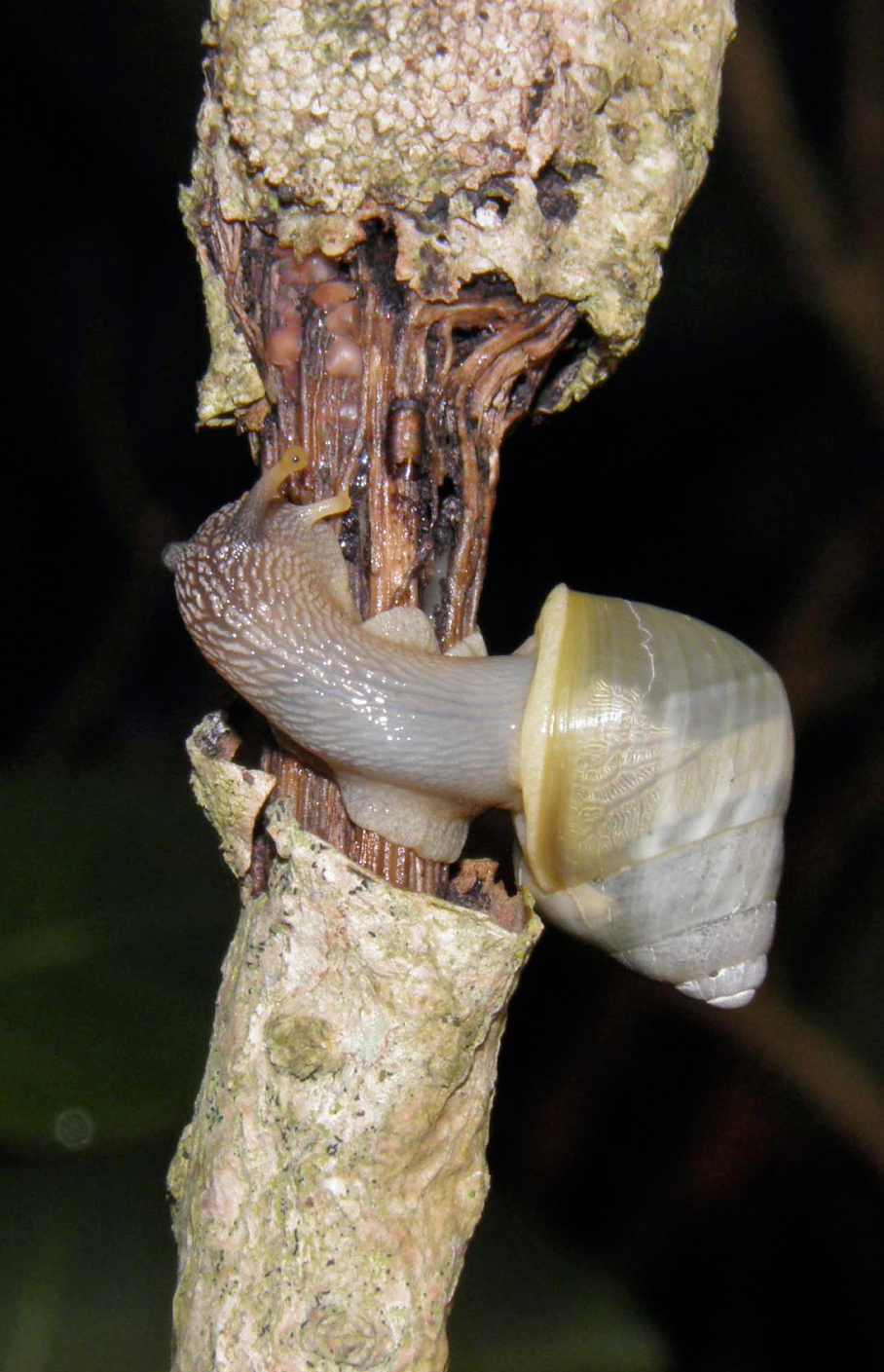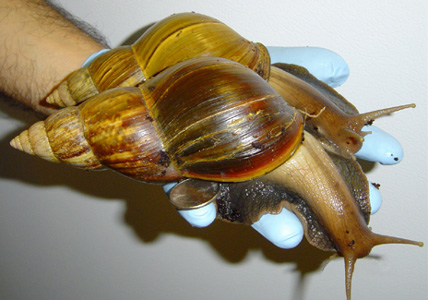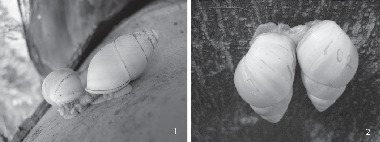When it comes to mating, these snails on Pulau Kapas goes against the norm. Here’s how.

- 69Shares
- Facebook60
- Twitter2
- LinkedIn1
- Email1
- WhatsApp5
If you like going to islands for a holiday, you’ve probably heard of Pulau Kapas before. Situated about 6 kilometers from the Marang Jetty in Terengganu, this island, a little bigger than 21 square kms, is named after cotton trees. Most would probably know this island for its sandy beaches overlooking clear, greenish-blue seas, but for biologists, there’s another convincing reason to come here: a special tree snail known as Amphidromus inversus.

Must’ve been some real interesting snails to distract these scientists from the beach. So what makes them a lot more interesting than, say, the siput babi you find in your garden? Well…
They um… have shells that coil both ways
#ihatecilisos
Okay okay, we know it doesn’t SOUND like a big deal, but it actually is.
Normally, one of the key things to look for when identifying snails is the direction their shells are coiled: whole snail species normally have their shells coiled in either counter-clockwise (sinistral), or clockwise (dextral) direction. As in the case of the siput babi (Achatina fulica), you’ll find that their shells are often coiled in the dextral direction.

The A. inversus is a bit different. They belong to the Amphidromus subgenus of snails, and as their name suggests (Amphi=on both sides, dromus=running), the shells of snails in this subgenus can naturally be found coiling in both directions. This is a very rare trait to find in snails, because of the way they do sexy time.
If you’ve never seen snails having sex before, you can watch this video (probably NSFW, if you’re a baby snail). Basically, a lot of snails are hermaphrodites, and to have sex they usually face each other and… do the rub-a-dub-dub until their genitals come out of one particular side of their face.

The Pulau Kapas snails may have mismatched genitals, but somehow they overcome (lol)
So here’s the challenge for snails in general – which side the genitals come out from depends on which direction their shells are coiled, because snails are asymmetrical like that. Us humans are actually pretty asymmetrical ourselves, having the heart on the left side of the chest and being right/left handed, for example. But imagine a left-handed person trying to shake hands with a right-handed person, and you’ll see how snails who go against the norm can have sexual trouble.

They can’t normally line up their dingaling to face the normal snail’s hoo-ha, so they end up not having sex. Being a rebel can be a huge disadvantage to snails, so perhaps that’s why most species decide to coil their shells in a particular direction.
Once in a while, though, a differently-coiled snail do get born, but they rarely get to pass on their genes and die lonely. That’s why it was a one in a million find when a British professor found a rare sinistral (counter clockwise) garden snail in an otherwise dextral (clockwise) species – so rare that he had to ask the public for help in finding another sinistral garden snail to mate with his snail, which he called Jeremy.
But A. inversus actually managed to find a way to exist in the wild in both dextral and sinistral forms in roughly the same amount, which means that they don’t let something like shell orientation get in the way of lovemaking. This rare phenomenon of mirror images of a species coexisting together is called ‘antisymmetry‘, and research had shown that their natural selection may actually encourage it: matings between snails with different coilings (D × S) occur more frequently than expected by chance than between snails with similar coilings (D × D or S × S). And as you can see from pictures, instead of coming face to face with each other, these snails seem to have adopted a side-by-side approach instead.
Wow. So what do we get from studying these snails?

Well, for one thing, it gives us a new perspective on snail classification. Snails are often classified based on the way their shells are coiled due to the supposed impossibility of different-coil mating, but the Amphidromus snails challenged that notion. But these snails weren’t the only ones doing that: In Japan, two genetically similar snails with opposite coiling – the Euhadra aomoriensis (dextral) and the Euhadra quaesita (sinistral) – had often been considered as separate species due to their different coiling directions, but researchers recently found that it is possible (though rare) for these two kinds of snails to mate, by twisting their genitals to face the other one.
This led to discussions on whether they should be classified as the same species or not.
“…while mating – and the movement of genes – between the two types is certainly a rare event, it occurs sufficiently often that the two types should properly be considered a single species. It turns out that the mating problem is mainly behavioural, requiring a twisting of the genitals, rather than a physical incompatibility.” – Dr Angus Davidson, of the University of Nottingham, to Phys.org.
Some researchers also believe that studying the genes that allow for mirror images among these snails can shed some light on how organs can sometimes be mirrored in humans as well – a genetic condition called situs inversus, which affects an estimated 1 in 10,000 people – and how the process can go wrong.
Huh. Guess there’s something to be gained from watching snails after all.
- 69Shares
- Facebook60
- Twitter2
- LinkedIn1
- Email1
- WhatsApp5


